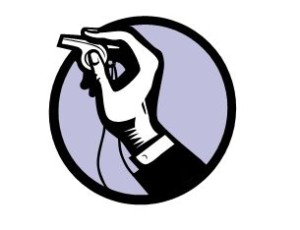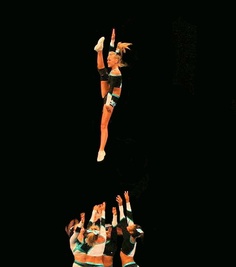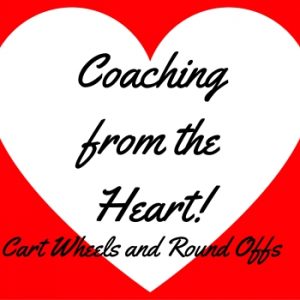Age vs. Level – Aren’t They the Same? (Revised)
This blog originally appeared back in 2013-14 cheer season and was carried over from there. With the changes in the rules, it has been revised for accuracy of content.
In every gym there are statements said by parents that make others take pause and question how much each parent truly understands the sport of cheerleading. When my daughter started doing all-star cheer at the ripe old age of 4, I made it a point to try and understand the sport. The reason that I do what I do is to learn more about the sport. I am a person that LEARNS about what I get into or, as in this case, what my daughter gets into. My first reaction is to read about it, which I have. I have done a lot of exploring of the USASF website (www.usasf.net), finding the rules, the level specifications, and a very handy booklet called “Cheer Parent 101”, basically explaining in very basic terms everything a parent would need to know about getting their child involved in all-star cheerleading. I had printed off that book and handed it out at a new parent meeting that very year and I had parents that had been with the gym for years asking for a copy!
There will be situations in every gym where a team starts out categorized as one and then are moved to another. The reasons will vary, and they are too many to fully list here, but the coaches make those decisions to give the athletes the best ability to be competitive. There are times where with a few athlete shifts, a Senior Level 3 might become a Junior Level 3. Is there a difference? At times, due to the reaction of parents you might think there is but the reality is there isn’t. Well, other than age there isn’t. Most likely the decision is made due to the number of athletes and their ages. Why have junior aged athletes go up against senior-aged athletes when they don’t have to? So shifting the athletes that were of senior age level to another team and allowing the team to be a junior age, but still compete at a level 3 is most logical. There most likely are two reactions to this; either people are understanding (“This makes perfect sense”), or people are questioning this decision (“What?! My daughter has been working on her round off handspring tucks all summer! She has been doing privates and working with gymnastics coaches to get it, and they are now putting her back on a JUNIOR LEVEL 3 team?!”). They often sound like someone is cutting off their left leg!
But then there is the question that begs to be asked by those in the know. “You do realize that “junior” and “senior” are ONLY age groupings, right? The USASF places age groupings into the mix so that children are not being pulled down to lower level teams as “ringers” and young children are not being pushed too fast to higher levels and being seriously hurt. You understand this, right?”
The questioning parent will stare. “Yes, I know that,” they will snap. “But she has worked hard on the round-off handspring tuck and now. . .”
“The skill level of the team is exactly the same. So she can still do her round-off handspring tuck. They aren’t changing the skill level of the team – the girls will do the same skills at a junior level 3 that they would have at a senior level 3.”
“Then why not let them compete as a senior level 3?” Obviously it is not understood.
Admit it; this conversation has gone on a time or two in gyms among the parents. “Well why have a group of 14 year olds and under compete against teams that are loaded with athletes that top out at 18 years old? To me, it makes more sense to have 14 year olds with level 3 skills compete against other 14 year olds with level 3 skills. When you compete against older athletes, the older athletes have had longer to perfect the skills and look better, thus winning more. Level 3 is level 3 whether you are 10, 12 or 18. Why not have them take their skills and compete against others that are of their same age and ability?”
It does take a moment to process. So many look at the age labels as the true designation of the team’s level because (quite logically) the higher aged teams typically are competing at the higher skill levels. Most likely these athletes have been in cheer for a while and they have “mastered” skill levels that are higher than someone that might have been in competitive cheer for say three years. Not that it isn’t possible for a junior aged athlete to have the skills of a Level 3 or 4 athlete, but I think you might be understanding things here.
 Level 3 is level 3 whether you are ten, twelve or sixteen. There are Senior Level 3 teams. They do the very same skills as a Youth Level 3 team, but they do it at a different age grouping. Age is all that differs in this; nothing else. If you go and look up the level rules on the USASF website, you will see that they do not specify anywhere in there about at a certain age you can only do certain level moves (excluding Level 5 and 6, and a few exceptions such as partner stunting stipulations). It really is all the same.
Level 3 is level 3 whether you are ten, twelve or sixteen. There are Senior Level 3 teams. They do the very same skills as a Youth Level 3 team, but they do it at a different age grouping. Age is all that differs in this; nothing else. If you go and look up the level rules on the USASF website, you will see that they do not specify anywhere in there about at a certain age you can only do certain level moves (excluding Level 5 and 6, and a few exceptions such as partner stunting stipulations). It really is all the same.
At this point, you know that every single parent is headed over to the USASF website to take a look at these rules and try to understand this idea. If you are the parent in the know, you are the smartest parent in the room at that point.
Yes. It is right on their website. You don’t need anything other than a computer to look them up. Matter of fact, I have watched coaches and owners pull them up on their phone to double check a rule during competition. I have them and printed them off so that I could understand the sport a bit more.
I think this is more common than most realize. Parents of 10 year olds with their round-off back handsprings are so agitated when their athletes are placed on a youth team instead of a junior team, even though the youth team is a level 2 skill team. It is very well explained in the USASF “Cheer Parent 101” booklet. Age divisions are as follows:
| Team Age Classification | Ages Covered | Co-ed/Number of athletes | Skill Levels They Can Compete |
| Tiny | 6 and under | Yes; 5-32 | 1 |
| Mini | 8 and under | Yes; 5-32 | 1,2 |
| Youth | 11 and under | Yes; 5-32 | 1, 2, 3, 4 |
| Youth Restricted | 11 and under | Yes; 5-36 | 5 (with restrictions) |
| Junior Restricted* | 14 and under | Limit 0 – 4 Males; 5-36 | 5 |
| Junior | 14 and under | Yes; 5-32 | 1, 2, 3, 4 |
| Junior | 14 and under | No Males; 5-36 | 5 |
| Junior Co-ed | 14 and under | Yes; 5-36 | 5 |
| Senior Restricted* | 10 – 18 years | Limit 0 – 4 Males; 5-36 | 5 (with tumbling restrictions) |
| Senior | 10 – 18 years | Yes; 5-32 | 1,2 |
| Senior | 10 – 18 years | No males; 5-32 | 3,4 |
| Senior Co-ed | 10 – 18 years | 1 or more males; 5-32 | 3,4 |
| Senior | 10 – 18 years | Yes; 5-32 | 4.2 (Level 4 stunts; Level 2 tumbling) |
| Senior# | 12 – 18 years | No males; 5-36 | 5 |
| Senior Small Coed | 12 – 18 years | 1-4 males; 5-20 | 5 |
| Senior Med Coed | 12 – 18 years | 1-8 males; 5-30 | 5 |
| Senior Large Coed | 12 – 18 years | 1-18 males; 5-36 | 5 |
| International Open 5 | 14 & older | No Males; 5-24 | 5 |
| International Open Small Coed 5 | 14 & older | 1-4 Males; 5-24 | 5 |
| International Open Large Coed 5 | 14 & older | 5-12 Males; 5-24 | 5 |
| International Open 6 | 17 & older | No males; 5-24 | 6 |
| International Open Small Coed 6 | 17 & older | 1-4 Males; 5-24 | 6 |
| International Open Large Coed 6 | 17 & older | 5-15 Males; 5-24 | 6 |
There are specific age restrictions and other specifications with each grouping; see the “Cheer Level Rules” under the “Safety” tab of the USASF.net website.
I find great interest when a parent would rather (and I have seen this happen) have their athlete compete on a Senior Level 1 team than a Junior Level 2 team, thinking for some odd reason this makes their athlete “better”. The confusion is great in this area because people keep equating age bracketing with level of ability.
I don’t totally find fault with the parents that do this. It is also partially the gyms’ fault as stated before. The older teams typically are the ones that compete at the higher levels when gyms are smaller. I mean the Youth team is a level 1 team, the junior team a level 2 team and then the senior team is a level 3 team. So in this instance the older team is the higher level team. This does end up getting the athletes and parents the desire to compete on the older team because they are at a higher level. But again, gyms have to take the majority of athletes at the age level and assess them in the overall skill level and work from there. If you have two youth athletes that can do level 2 skills and the rest at a level 1 skill level, it hardly makes sense to compete at a level 2. The coaches make the decision to compete at a level 1 skill level. This is something else that parents don’t get – or rather, don’t WANT TO GET. It is NOT all about THEIR child; it is about ALL of the CHILDREN (plural; as in the entire team). 
I am a parent – I get that your priority is your child/children. But in the world of a TEAM, you have to look at ALL of the athletes there. You can’t focus on your child in a team. It isn’t fair, it isn’t right, and it will only get you in poor light with the coaches and the gym. You have to understand that sometimes athletes have to be at the age group first, and the skill level second. Ideally it would be wonderful to be able to move kids to the skill level they can compete at, but in all honesty the rules just might not allow that.
Another example can be a 9 year old athlete that could clearly compete on a level 4 team skill wise. She throws standing tucks and working on halves and fulls. The problem is that she is 9, and your gym’s top skill leveled teams are all Senior teams. She is the only one in that age grouping that advanced, and they don’t have enough with the skills for a youth or junior level 4 team. She is too young to compete at a senior age level, so she has the option of trying to find a gym in the area that has the skill leveled team that she is able aged-wise to compete on or there has to be some “creative” problem solving. What can be done to compensate? She can do individual competitions in cheer. At 9 she could go out there and blow many youth aged athletes away skill wise. That can be the answer for that athlete. That could also be the answer for so many others. People at times need to be creative with how they handle situations with athletes.
It is important that parents remember that the coaches and gyms have rules to operate within and they can’t just put an athlete somewhere because YOU want them there. It is not the job of the parent to run the team; if it were, they would be COACHING. It is our jobs as parents to support and love our athletes. It is NOT our jobs to tell coaches what to do or where to place an athlete. We pay these people THOUSANDS (sometimes much more) to coach our athletes. If you don’t trust those people, why in the world are you allowing your child to cheer with them? That is the point of everything – coaches are paid to coach. We pay them for their knowledge. If I am not confident that the coach of my child is the best, then she is not cheering for that gym or coach. That should be the parents’ understanding. I think that every gym needs to put that back onto the parents each time they question a coach’s decision. If the parent questions the coach, then it means they don’t TRUST the coach and their abilities. That is the point they need to go elsewhere. Gyms need to also stop being afraid to lose people and realize that when this is the situation a parent is faced with, they will normally (not always) realize that they are overstepping their bounds and back off. If they don’t let them be another gym’s problem. But it is ultimately the parents that need to back off and realize that decisions are made for a reason, and they are not ones you will always agree with or want. Parents are there to be a parent, and that is it. Learn the sport so you know what you are talking about, and then understand why the coach does what they do. That will be the best way to keep your sanity and support your child and coach.
Remember – the USASF will be your best friend in the way of the technical rules of the world of all-star cheer (and dance as well). www.usasf.net is the place to go, and there is so much there. I found so much information that I was sharing it with everyone at my gym. Be that person in the know! Visit www.usasf.net and learn the sport that your child is a part of so that you can be stress-free come practice, choreography, placement, and competition time.
http://www.heartofcheer.com/industry/age-vs-level-arent-revised/http://www.heartofcheer.com/wp-content/uploads/2014/05/nocheer.jpghttp://www.heartofcheer.com/wp-content/uploads/2014/05/nocheer-150x150.jpgBlogEducationIndustryParentsUSASFage,athlete,coaches,difference,level,rules,USASF




